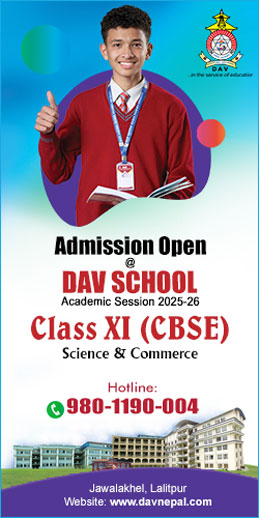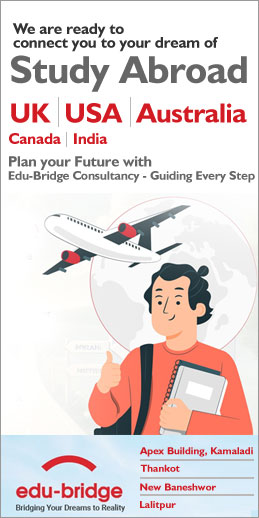Digital Alternative For Medical Education

Dr. Ashish Shrestha
The COVID-19 pandemic has transitioned the world and affected health care system the most. Education, the important pillars of any health institution is not an exception. Health service providers are stranded in different situations during this pandemic. Some are on the frontline, directly involved in managing patients; while others are associated with them directly or indirectly. At the same time, medical students are not able to learn for some time now and have exercised their leisure time enough to start getting bored. All of them are in a limbo.
There is an increasing fear and concern among medical students regarding missed classes, assignments, postings, assessment, internship and exposures. All added by the fear and reluctance of their parents to send their children back to school, be it a kindergarten or a medical college.
Medical teachers are also in a state of dilemma and have realised the need for change. How can we engage our students during such crisis? How do we maintain undisrupted learning? We are trying to answer these questions and have been trying to explore all possibilities. We jump from one platform to another; experimenting one module to another. Any one method so far has not sufficed our learning objectives nor met our expectations.
Flexible learning
Blending of techniques and facilitation of flexible learning should be encouraged, as an initial step. Flexible learning is offering choices in the educational environment, as well as customising a given course to meet the needs of individual learning. Need of flexibility in medical education is not only triggered by the present situation but also a demand of competitive health care system. We need to develop a mechanism to facilitate alternative teaching learning method; digital learning for instance.
More than four out of every ten individuals in the world are using smart phone. Everyone has a private email account. Internet users in Nepal are increasing rapidly every year, which reached 63 per cent of the total population in late 2017. With many advantages and challenges of digital education system, especially in the developing nation like ours, it can still be our lucky ticket. Digital education system is not new to us, but a proper guidance in time can certainly save nine. But at the same time we need to understand whether we want to do it because it is ‘nice to do’ or there is a ‘need to do’ it. With proper preparations, we can take this as an advantage since students are already accustomed to technology enhanced learning environments.
Integration of medical education with technology and artificial intelligence is the present day demand. Numerous online platforms have been developed and customised online portals for teaching learning, patient’s consultations, and telemedicine can be strengthened. There is an overlying supermarket of digital tools. Selecting proper tool or module is a big challenge. It is because we all are not used to it, not in the existing curriculum or cannot bear its financial burden. We need to be in par with the international standards and for that we must accept the competitive education system. We cannot always make an excuse of being from a developing nation, but rather be ready and anticipate the changes happening. Situation like this has made us realise where we stand and our level of preparedness. Efforts from teachers and students to convince the stakeholders could bring a change towards perception of digital medical education in Nepal. It may not be an integral and comprehensive component of the academic framework but can be a good teaching enhancement.
Though uncertainty is looming, reopening of academic activities is certain. The students on their return to classrooms might be confused or have mixed emotions; more for international students. Faculties and staffs should be trained properly to handle students and their parents. Necessary physical or mental health support and screening for students should also be planned.
Guidelines
We are in a gigantic educational crisis and we should be ready to handle it strategically. Institutes should prepare guidelines and validate the alternative methods and institutionalise it. We should take initiatives to unlearn this new dimension of education or as an opportunity to prepare protocols. Every department or school should identify their strengths and plan accordingly. The government would be instrumental in collaborating with major stakeholders, private agencies, internet service providers, software companies and others to ensure reliable network infrastructure, specify learning tools, provide digital learning platform, and support for teachers, staffs and students. We can be certain that investment in education can never go in vain and times like this will foster innovation in the field of medical education.
All this being said we should not forget that all of us are not equally versed with technology. At this time of crisis, we cannot suddenly expect everyone to come forward and welcome changes with open arms. This time of adversity has made us realise the need for alternative modalities and the best that we can do right now is prepare ourselves mentally and strategically for the possible changes that should be adopted in our current state of medical education.
(Dr. Shrestha is the head of Oral Pathology at BP Koirala Institute of Health Sciences, Dharan.)
source: Dr. Ashish Shrestha, 17 April 2020, RisingNepal
Posted on: 2020-04-17





























